-
News & Events

To better respond to the “High-level Hospitals Construction Program” initiated by the Guangdong Provincial Government, Zhongshan People’s Hospital wishes to hold more international academic events and successfully held the Sino-German Top-notch Hospitals Global Webcast on Airway Management 2021 on Apr 16th with simultaneous translation. The webcast embraced a perfect closure with more than 55,600 views online.
If interested please click the picture below to enjoy the replay of the webcast.
The webcast was moderated by Prof. FU Si-mao, the Vice President of Zhongshan People’s Hospital and chaired by Prof. JIANG Hai-ming, who is also the Vice President of the hospital and gave an opening speech. The audience of more than 200 people consisted of executives of the hospital including Vice President Prof. YUAN Run-qiang, and Directors, Head nurses, physicians and nurses from relevant departments.
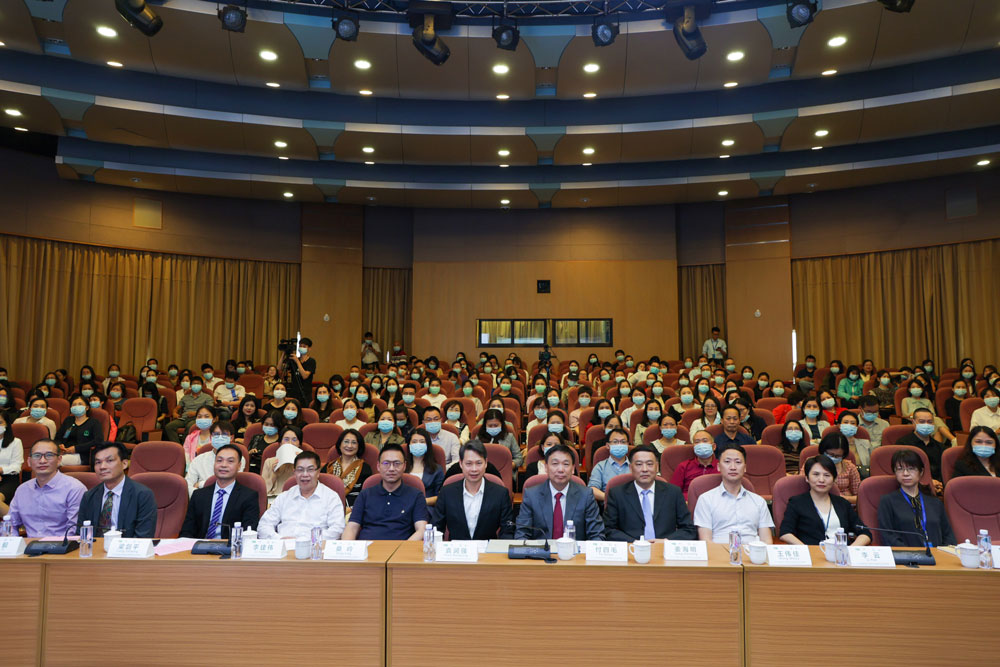
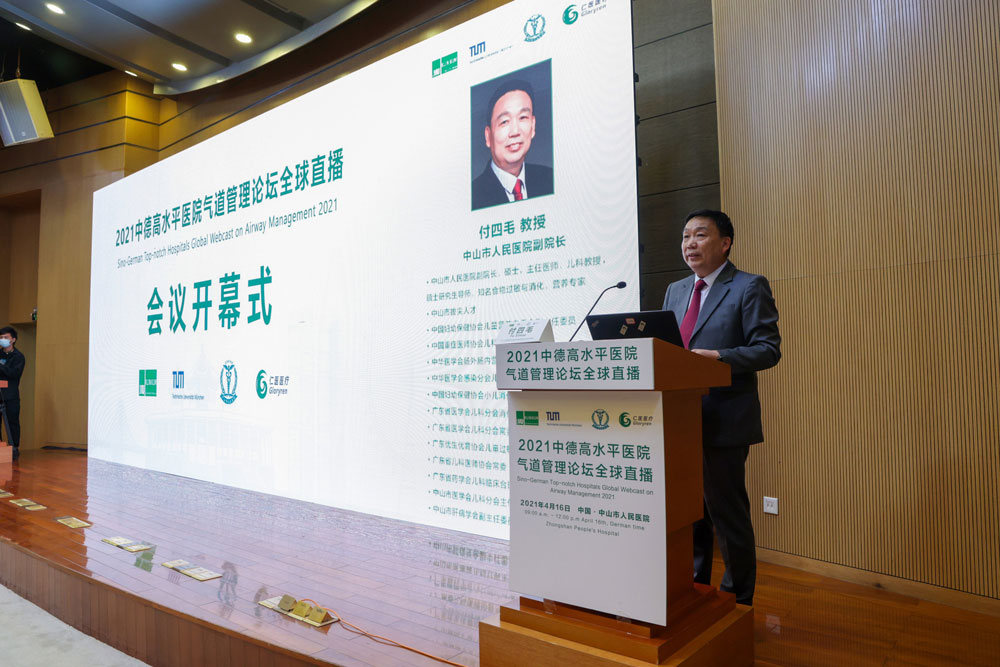
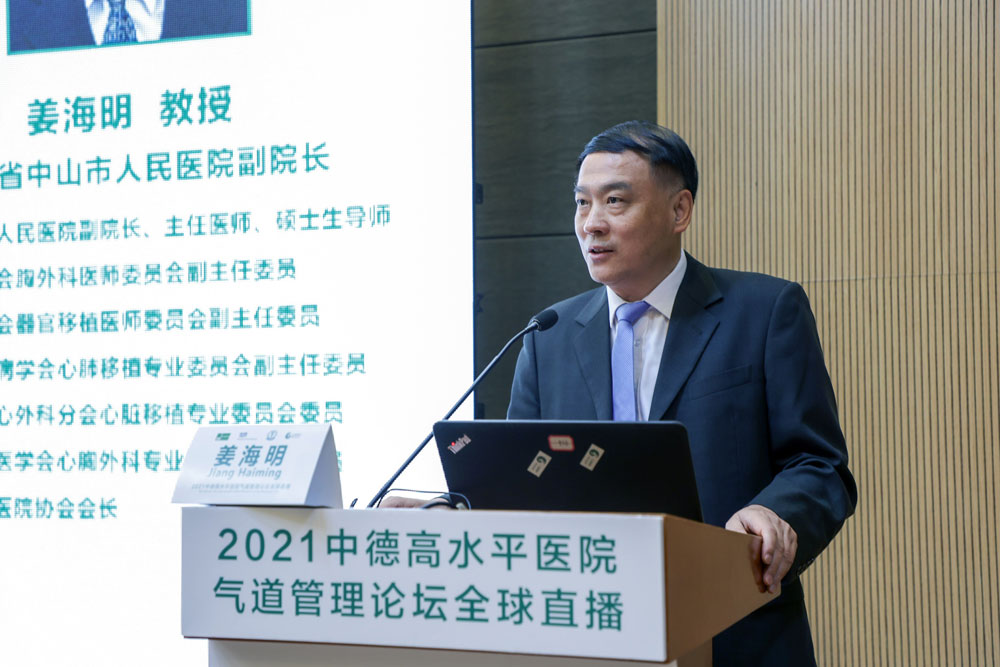
Healthcare has no borders and knowledge has no limit. Specialists from Germany and China shared their insights and experience with highlight lectures in airway management and had heated discussions with the attendees during the webcast. The faculty are Prof. Jürgen Behr, the Director of the Medical Clinic V, Clinical Center of the Ludwig Maximilians University Munich and Co-Head of the Comprehensive Pneumology Center Munich; Prof. Rudolf Hatz, the Chairman of the Department of Thoracic Surgery, Clinical Center of the Ludwig Maximilians University Munich and a Fellow of the American College of Surgeons; Prof. Gerhard Schneider, the Chairman of Clinic for Anaesthesiology and Intensive Care Medicine, University Hospital rechts der Isar of the Technical University Munich; and Prof. SANG Ling, the Deputy Director of the Department of Intensive Care, the First Affiliated Hospital of Guangzhou Medical University.
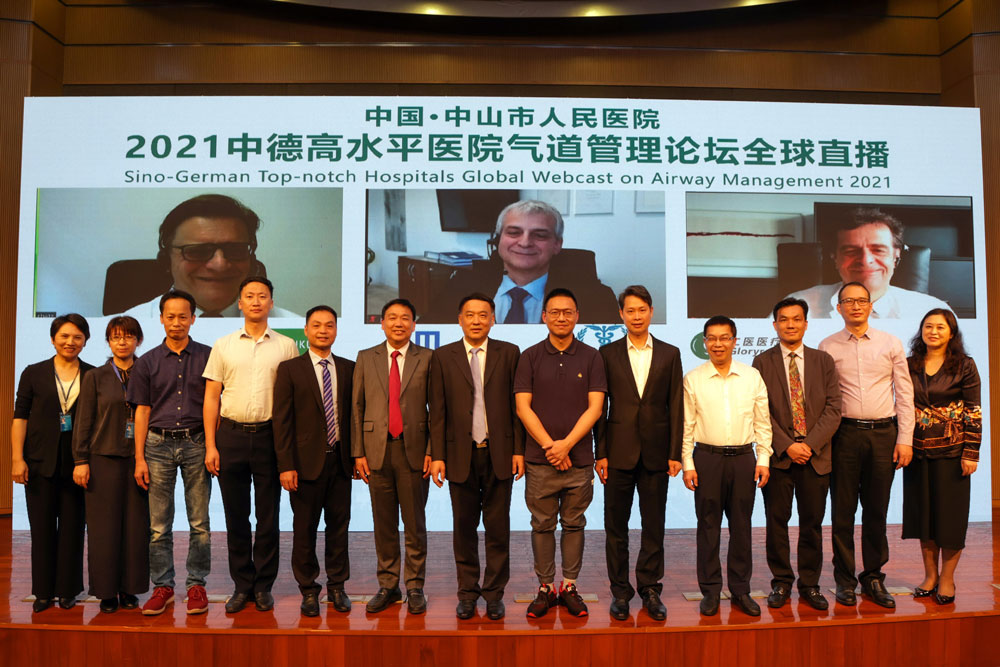
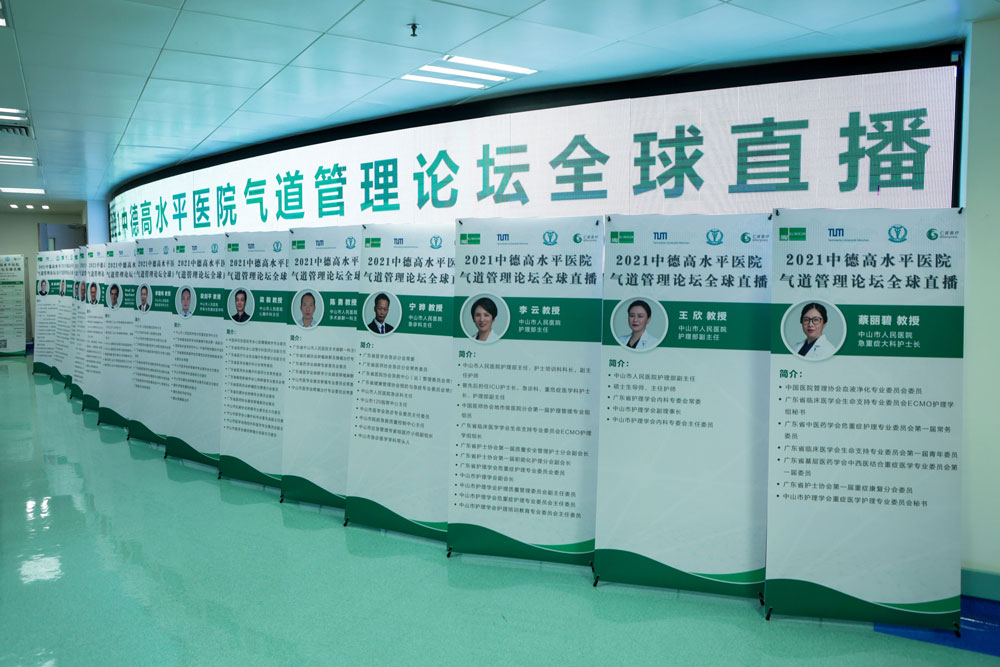
Prof. SANG Ling, the Deputy Director of the Department of Intensive Care, the First Affiliated Hospital of Guangzhou Medical University presented on the topic of “ Airway Management- Algorithm of Eliminating Sputum”.
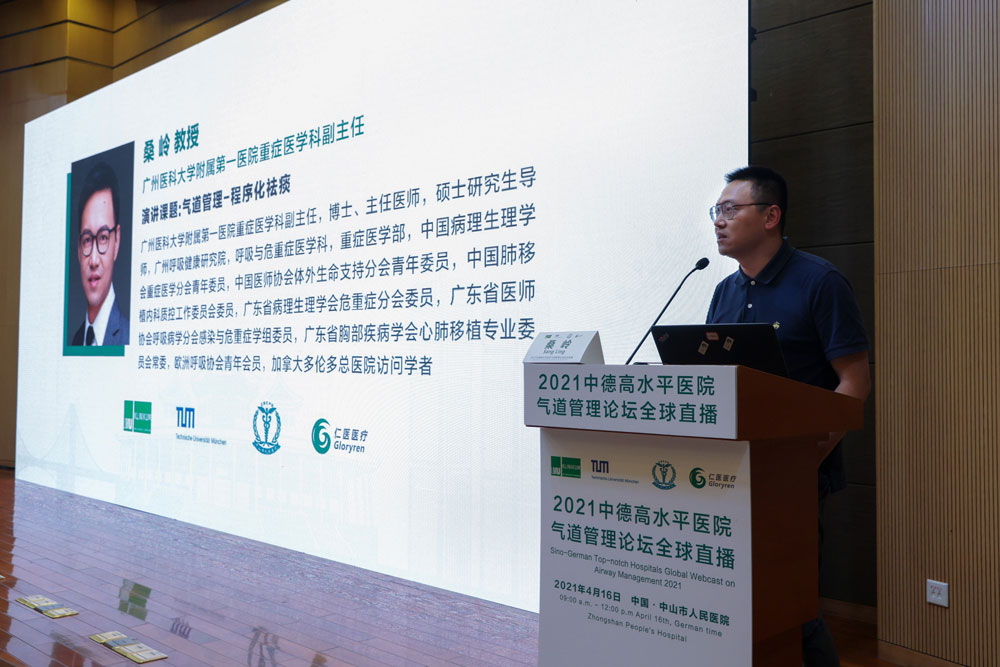
Prof. Behr gave a lecture titled Diagnostic Challenges and Treatment of IPF. Prof. Behr is the Director of the Medical Clinic V, Clinical Center of the Ludwig Maximilians University Munich, Co-Head of the Comprehensive Pneumology Center Munich and a member of the German Center for Lung Research (DZL). He has been in the list of the “ top doctor of COPD & pulmonary emphysema” for years by FOCUS magazine.
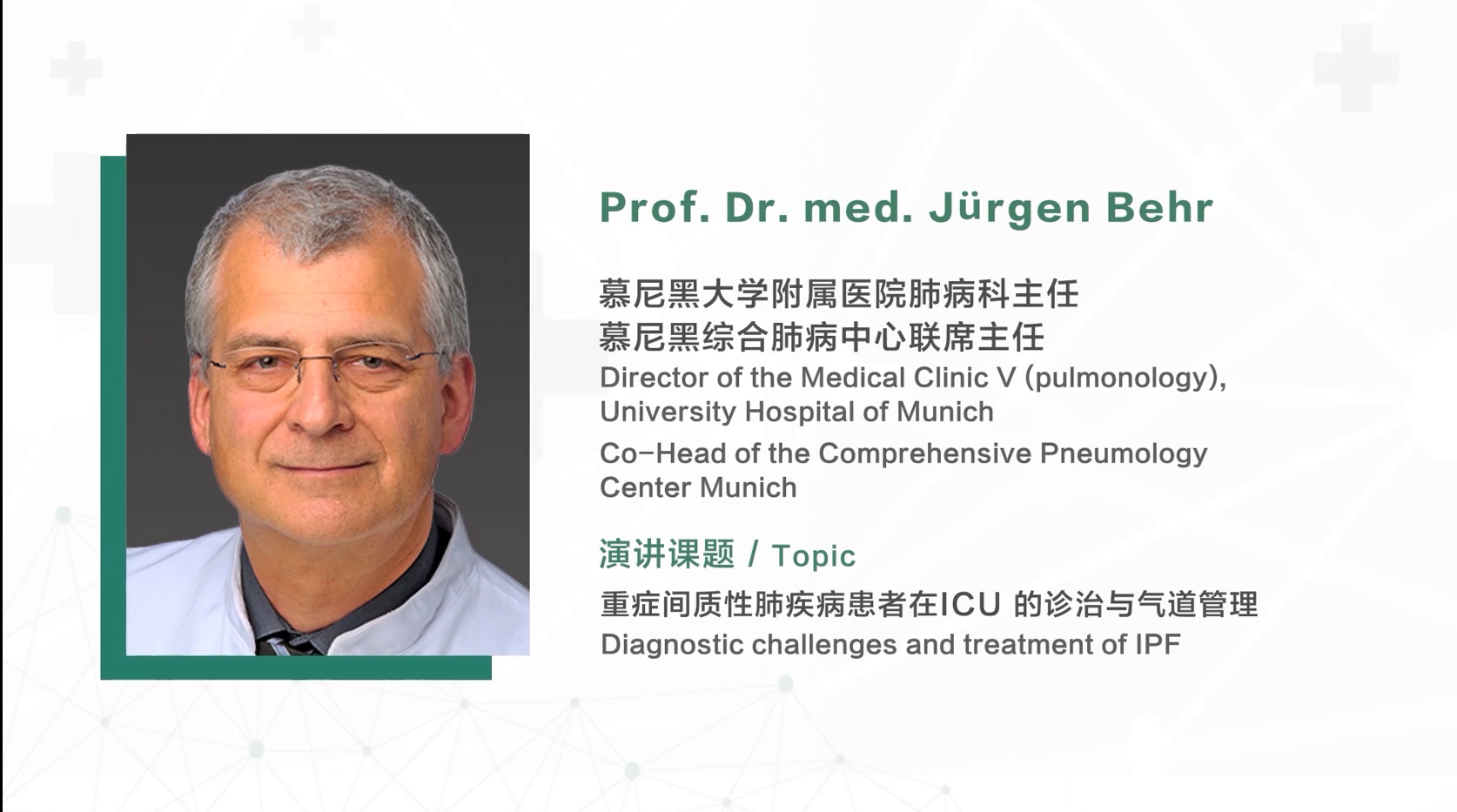
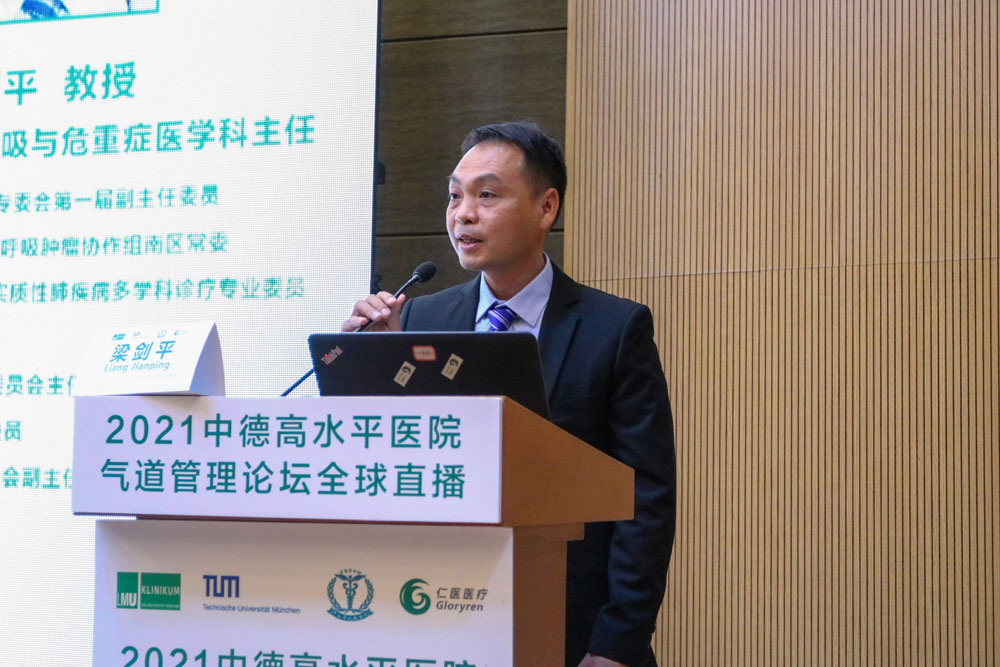
Moderator of Session 1: Prof. LIANG Jian-ping, the Director of the Department of Respiratory Medicine and Critical Care, Zhongshan People’s Hospital
Prof. Behr pointed out that Idiopathic pulmonary fibrosis (IPF) is a complex disease with multiple pathways and genetic predisposition. Accurate diagnosis is the key for management and clinical science. If biopsy is needed, Transbronchial lung cryobiopsy (TBLC) is the primary approach. Currently there are two antifibrotic drugs approved for therapy- Pirfenidone and Nintedanib, which can slow down progression but cure is not available. IPF and PF-ILD appear similar responsive to antifibrotic therapy. Lung transplantation is also a option, but only for a minority of suitable patients.
Acute exacerbations of idiopathic pulmonary fibrosis (AE-IPF) is characterized by diffuse alveolar damage - similar to ARDS and leads to high mortality of IPF. There is no proven therapy for AE-IPF. In AE-OPF with acute respiratory failure, Prof. Behr recommends high dose steroids, broad spectrum antibiotics, continuation/start of antifbrotic therapy, high-flow oxygen therapy and that if it is tolerated by the patients, non-invasive ventilation (NIV) is also appropriate. And AE-IPF patients without a treatable cause for AE should not be intubated and mechincally ventilated or put on ECMO, unless if there is a realistic chance for transplantation. In AE-IPF and/or advanced disease, palliative care should be taken into consideration.
Prof. Behr gave a lecture titled Perioperative surgical complications of the airway following thoracic surgical interventions. Prof. Hatz is the Chairman of the Department of Thoracic Surgery, Clinical Center of the Ludwig Maximilians University Munich, a Fellow of the American College of Surgeons, and the Head of the Munich Lung Transplant Group (MLTG). The MLTG has performed over 1000 lung transplantation since its establishment, which makes LMU one of the largest lung transplant centers in Europe.
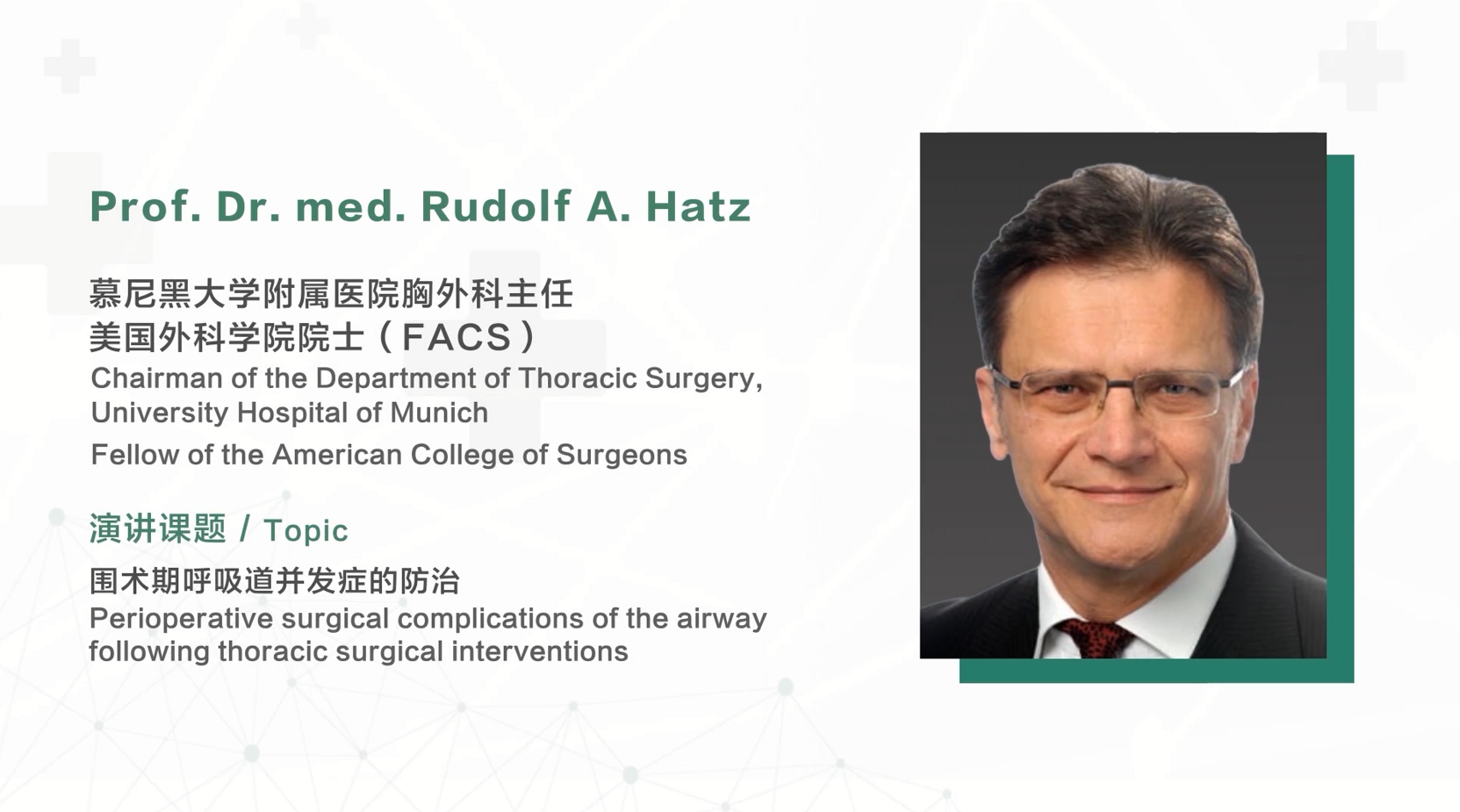
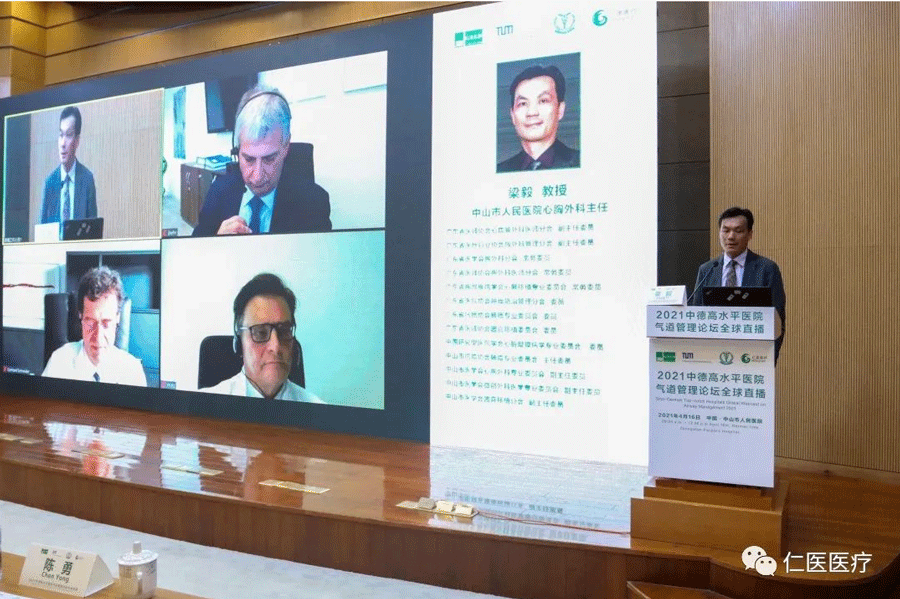
Moderator of Session 2: Prof. LIANG Yi, the Director of the Department of Cardio-Thoracic Surgery, Zhongshan People’s Hospital
According to Prof. Hatz, major airway complications following standard lung resections and lung transplantation are bronchopleural fistula (BPF) and bronchial stenosis. Later on Prof. Hatz shared his insights in the preventive measures and treatment of these complications with multiple cases. According to published statistics, the incidence of post-operative BPF after pneumonectomy is 5.9% with a mortality of 30%-40%, and in some cases, the mortality can reach 67%.
To prevent Bronchopleural Fistula (BPF), Prof. Hatz recommends smoking cessation >3 weeks prior to surgery, which has been taken for 10-15 year in Germany and studies show that it can lower the post-operative morbidity and mortality; intraoperative bronchscopy (mandatory in sleeve resection and pneumectomy); immediate respiratory and physiotherapy and mobilisation
of bronchial secretions and bronchoscopy during the postoperative period. He also give suggestions on how to prevent surgical flaws: When using a stapler device for closure of the right main bronchus for pneumonectomy, try to staple the main bronchus as parallel to the trachea as possible; do not leave the bronchial stump too long; if a manual suture is necessary always use resorbable suture material (always a matress suture); always dissect the tissue surrounding the bronchus as minimally as possible; do not perform bronchial wedge resections, if possible; Bronchial stump in right pneumonectomy and bronchial anastomoses after sleeve resection and in lung transplantation should always be prophylactically butressed.
Prof. Hatz summarized that the key to prevent complications following standard lung resections and lung transplantation is to control infection. For the Bronchopleural fistula with a diameter of more than 5mm, we should perform surgery immediately or drain the Empyema/Pneumothorax before surgery. For the Bronchopleural fistula with a diameter of less than 5mm, we should try to drain the Empyema/Pneumothorax and perform endoscopic intervention such as glue, stent, valve and Amplatzer devices first. If these are not sufficient, we should go for surgery. For the patients with bronchial stenosis, Nd:YAG Laser and metal stents should be taken into consideration depending on situations.
Prof. Schneider gave a lecture titled Unpredictable difficult airway in patients undergoing general anaesthesia. Prof. Schneider is the Director of the Department of Anesthesiology and Intensive Care of Hospital of rechts der Isar Technical University of Munich, who is leading a team that serves more than 50,000 patients annually. Prof. Schneider enjoys great international reputation for his clinical and scientific achievements in the field of anesthesiology, intensive care and emergency medicine.
Prof. Schneider gave a lecture titled Unpredictable difficult airway in patients undergoing general anaesthesia. Prof. Schneider is the Director of the Department of Anesthesiology and Intensive Care of Hospital of rechts der Isar Technical University of Munich, who is leading a team that serves more than 50,000 patients annually. Prof. Schneider enjoys great international reputation for his clinical and scientific achievements in the field of anesthesiology, intensive care and emergency medicine.
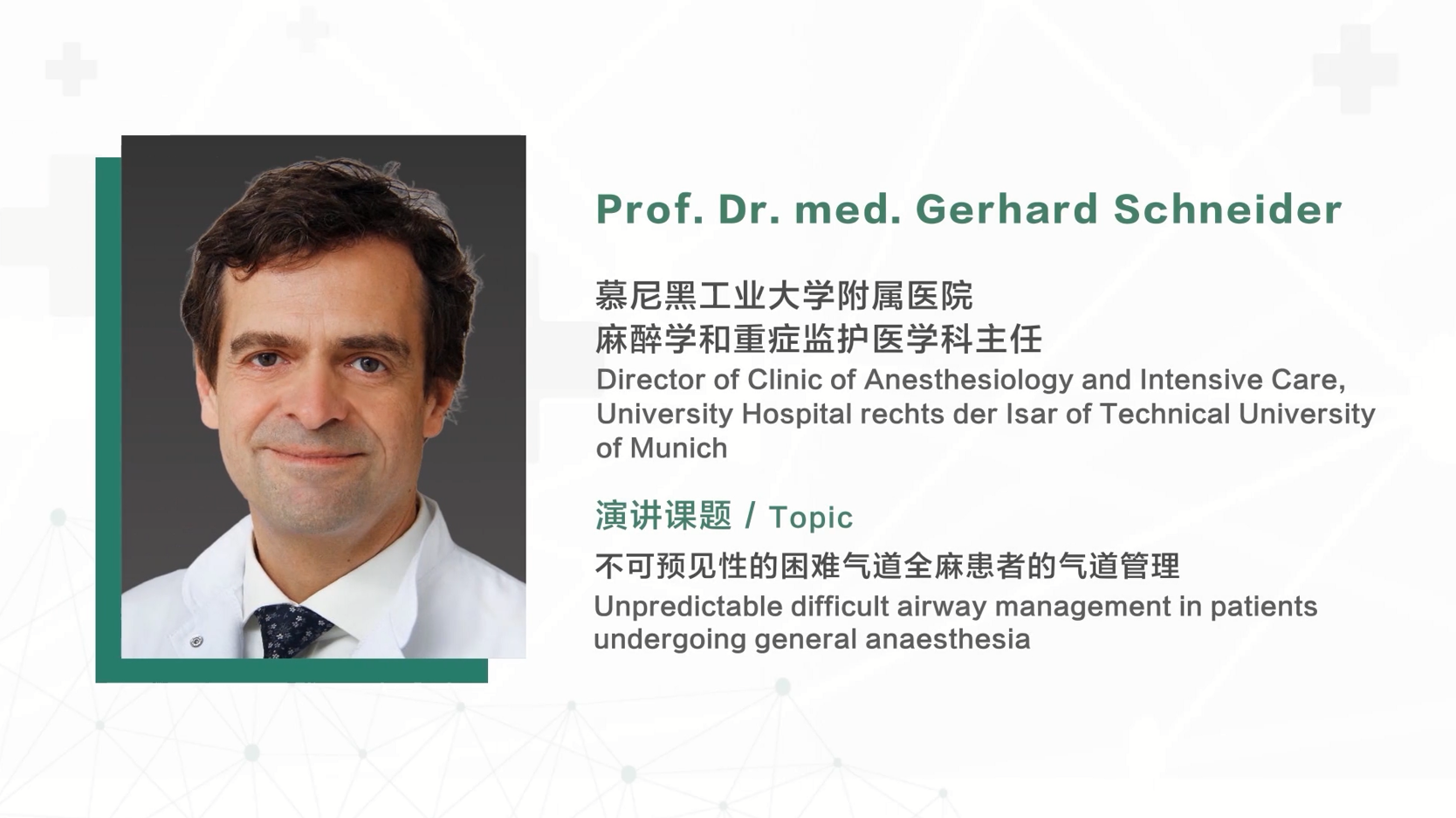
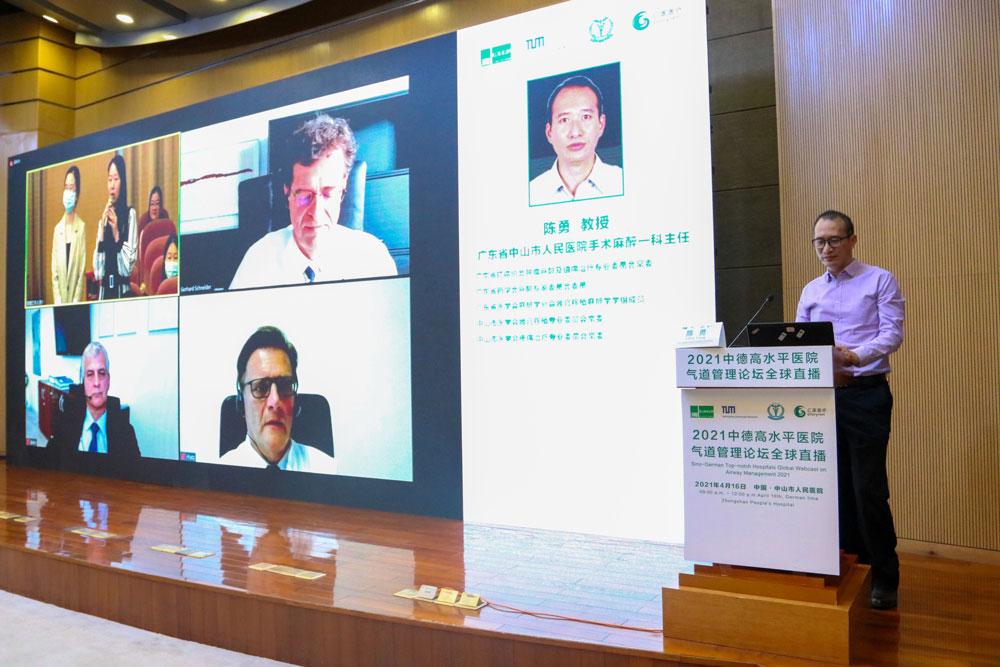
Moderator of Session 3: Prof. CHEN Yong, the Director of the Department of Surgical Anesthesiology Ⅰ, Zhongshan People’s Hospital
Prof. Schneider shared introduction and management of difficult airways during his talk. A difficult airway is defined as a situation when mask ventilation is impossible, when laryngoskopy is impossible, when endotracheal intubation impossible or a combination of the above. The key principle to manage the difficult airway is to identify the difficult airway in advance. Difficult airways can be separated as expected ones and unexpected ones. The excepted ones can be dealt with by fiberoptic intubation or videolaryngoscopy. The unexpected difficult airways should be managed by fixed algorithm depending on the different situations: when ventilation is impossible or when intubation is impossible. The fixed algorithm must be valid for every anesthesiologist in the hospital and carry out effective training program on a regular basis.
The first step is to treat anatomical airway obstruction, by improving positioning and applying C-grip to the patient, followed by using Guedel-tube with double C-grip. The second step is to treat functional airway obstruction by taking appropriate measures when facing “light” anaesthesia, laryngospasm, bronchospasm, rigidity (opioids) or air in stomach. If the steps above did not help, we must perform plan A: Laryngoskopy to remove the foreign body or aspirate, and do the intubation if possible. If plan A is unsuccessful, plan B of using laryngeal mask airway or laryngeal tube is recommended. There are several options for intubation, but the decision maker should decide within the hospital which device should be used, which is beneficial to the training for all the team members.
In his conclusion, Prof. Schneider stressed that the patients won’t die from intubation failure but will die from ventilation failure. Therefore, ventilation and oxygenation are more important than intubation.
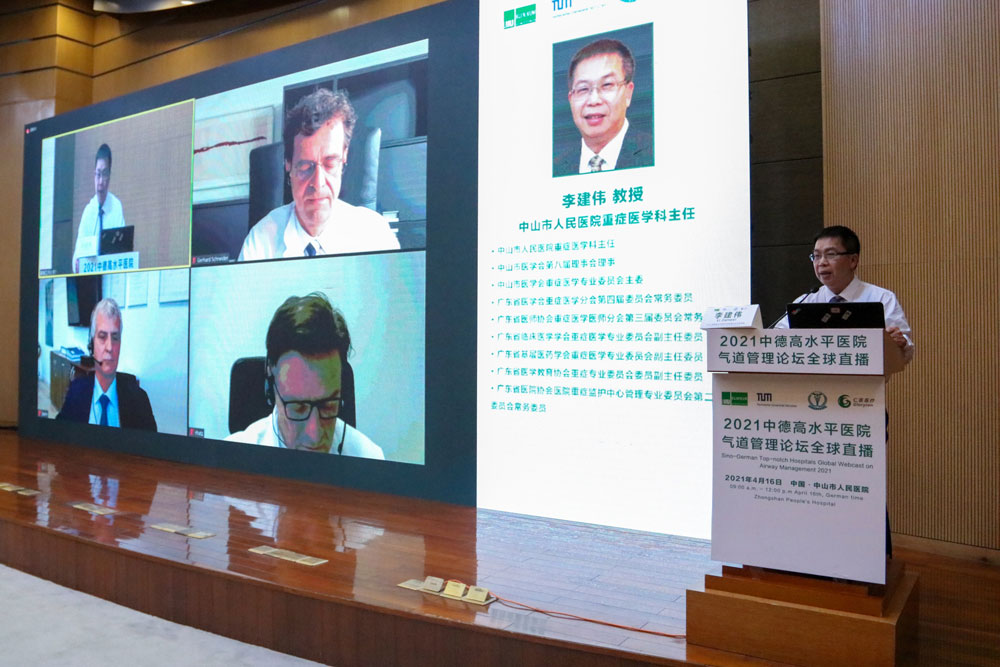
Moderator of discussion: Prof. LI Jian-wei, the Director of the Department of Intensive Care, Zhongshan People’s Hospital
Zhongshan People’s Hospital was selected as a member of the “High-level Hospital Construction Program” initiated by the Guangdong Provincial Government. As an important project of this program, the construction and effect evaluation of MDT airway management model aims to strengthen and standardize the quality of clinical airway management. To better carry out the program, the executives of Zhongshan People’s Hospital wish to benchmark the internationally prestigious hospitals and learn from them for advanced concepts and medical techniques in airway management.
